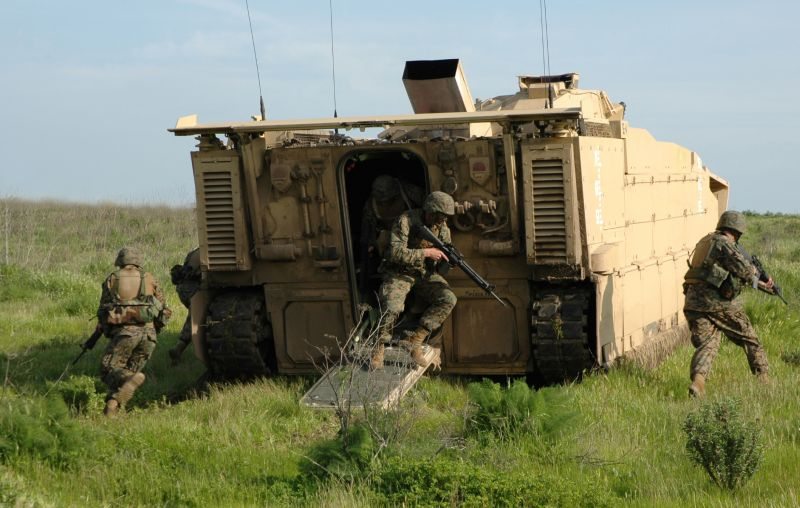As spending cuts and downsizing continue across America, the Marine Corps faces a similar future.
Secretary of Defense, Robert Gates, laid out his plan for more than $150 billion in savings over the next five years from spending cuts in a written statement Jan. 6.
Two future Marine Corps programs will draw significant blows.
The termination of the Expeditionary Fighting Vehicle (EFV) program will be first on the fiscal chopping block. The commandant of the Marine Corps, Gen. James F. Amos, said he agrees with the cancelation of what would have been the Corps’ newest amphibious tracked fighting vehicle.
“After a thorough review of the program within the context of a broader Marine Corps force structure review,” said Amos in a written statement. “I personally recommended to both the Secretary of Defense and the Secretary of the Navy that the EFV be cancelled and that the Marine Corps pursue a more affordable amphibious tracked fighting vehicle.”
With the termination of the EFV, the Marine Corps is poised to meet the challenge of fielding a modern and affordable amphibious vehicle that will meet the needs of defending America’s interest.
“Our Nation’s amphibious capability remains the Corps’ priority,” Amos said. “In the complex security environment we face, the execution of amphibious operations requires the use of the sea as maneuver space.”
Amos added that a modern and affordable amphibious tracked vehicle is the means toward this end.
Another Marine Corps program not being spared in the cuts will be the Marine variant of the Joint Strike fighter. The stealth fighter jet capable of vertical flight will take a two-year backseat to the overall production of the aircrafts. Defense Department official said this is due to significant testing problems.
The Marine Corps has not purchased a fixed wing tactical aircraft in 11 years. The JSF is scheduled to replace the Navy and Marine Corps F/A-18 Hornet and EA-6B Prowler, and the Corps’ AV-8B Harrier II.
Due largely to significant cuts in programs like the EFV and JSF, Gates has become known as a budget hawk in recent months as he continues his assault on wasteful and excess defense spending.
In his view, “these are all things that we should do as a department and as a military regardless of the time and circumstance. But they are more important than ever at a time of extreme fiscal duress, when budget pressures and scrutiny fall on all areas of government, including defense.”
Not all news is grim for Marines though.
According to the Defends Department’s statement, the Department of the Navy plans to use part of their efficiencies savings to increase the repair and refurbishment of Marine equipment used in Iraq and Afghanistan.
The refurbishment plans come at a time of need for the Marine Corps. In the Corps’ global presence throughout the last decade, the amount of equipment remaining for non-deployed units to use for training has demised. According to the Corps’ 2010 report to Congress, the supply rating of units in Afghanistan is near 100 percent, while the supply rating of units at home is less than 60 percent.
With a refocused spending policy on shoring up equipment shortfalls, and wasteful and excess spending, the Marine Corps can continue to act as America’s force in readiness across the spectrum of future security challenges.











